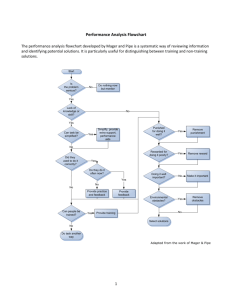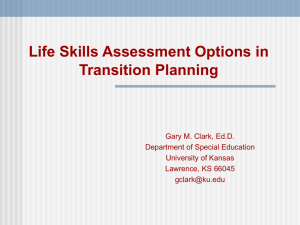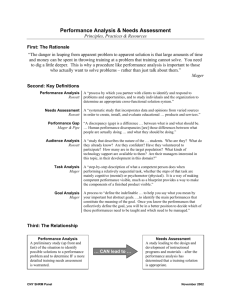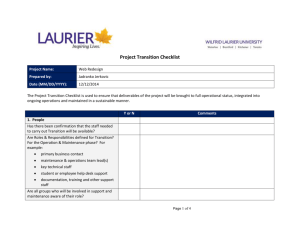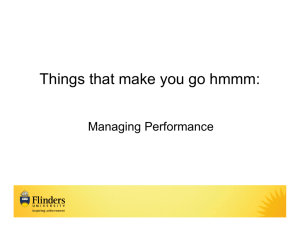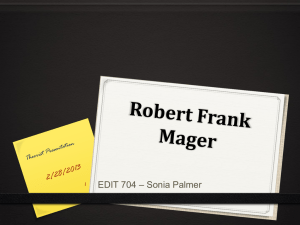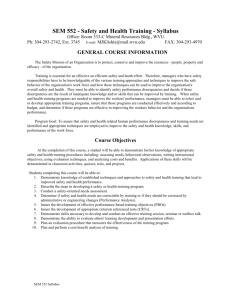Training Needs Assessment Checklist | Mager & Pipe
advertisement
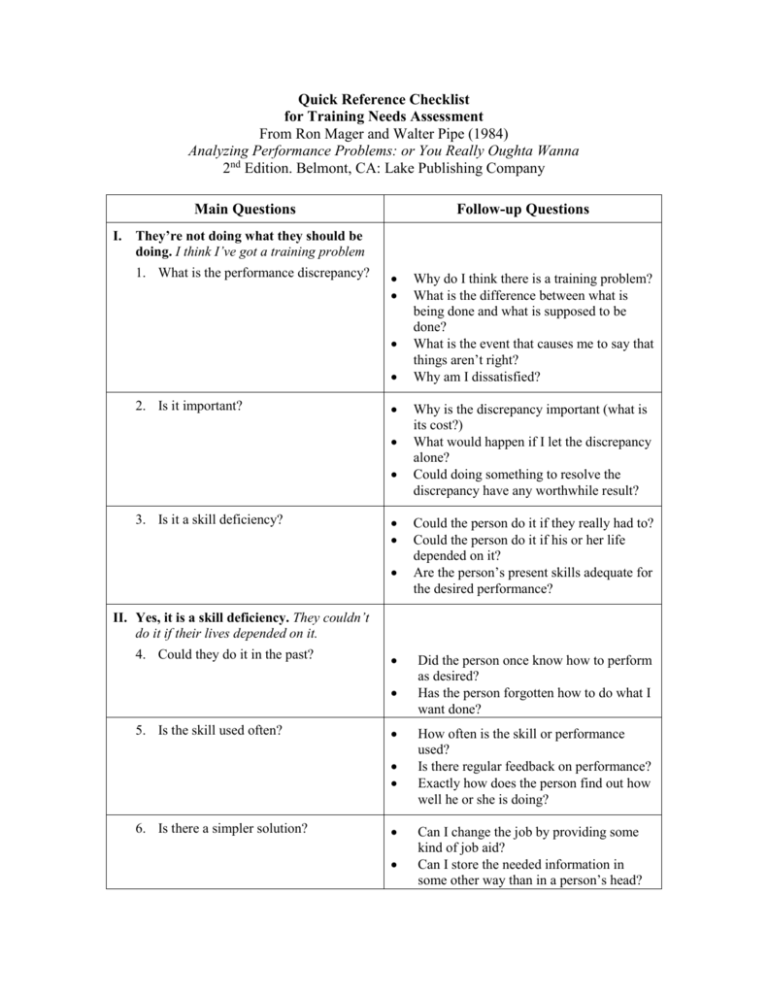
Quick Reference Checklist for Training Needs Assessment From Ron Mager and Walter Pipe (1984) Analyzing Performance Problems: or You Really Oughta Wanna 2nd Edition. Belmont, CA: Lake Publishing Company Main Questions I. They’re not doing what they should be doing. I think I’ve got a training problem 1. What is the performance discrepancy? Follow-up Questions 2. Is it important? 3. Is it a skill deficiency? Why do I think there is a training problem? What is the difference between what is being done and what is supposed to be done? What is the event that causes me to say that things aren’t right? Why am I dissatisfied? Why is the discrepancy important (what is its cost?) What would happen if I let the discrepancy alone? Could doing something to resolve the discrepancy have any worthwhile result? Could the person do it if they really had to? Could the person do it if his or her life depended on it? Are the person’s present skills adequate for the desired performance? II. Yes, it is a skill deficiency. They couldn’t do it if their lives depended on it. 4. Could they do it in the past? 5. Is the skill used often? 6. Is there a simpler solution? Did the person once know how to perform as desired? Has the person forgotten how to do what I want done? How often is the skill or performance used? Is there regular feedback on performance? Exactly how does the person find out how well he or she is doing? Can I change the job by providing some kind of job aid? Can I store the needed information in some other way than in a person’s head? ADE 5189 Spring 2010 Page 2 Main Questions 7. Do they have what it takes? Mager & Pipe Performance Analysis Checklist Follow-up Questions Can I show rather than train? Would informal training (such as OJT) be sufficient? Could the person learn the job (are they trainable)? Does this person have the physical and mental potential to perform as desired? Is this person overqualified for the job? III. It is not a skill deficiency. They could do it if they wanted to. 8. Is the desired performance punishing? 9. Is nonperformance rewarding? 10. Does performance really matter to them? What is the consequence of performing as desired? Is it punishing to perform as expected? Does the person perceive desired performance as being geared to penalties? Would the person’s world become a little dimmer if the desired performance were attained? What is the result of doing in the present way instead of the desired way? What does the person get out of the present performance in the way of reward, prestige, status, jollies? Does the person get more attention for underperforming than for performing? What event in the world supports or rewards the present way of doing things? (Is the system inadvertently rewarding irrelevant behaviors while overlooking the crucial behaviors?) Is this person “mentally inadequate,” doing less so that there is less to worry about? Is this person physically inadequate, doing less because it is less tiring? Does performing as desired matter to the performer? Is there a favorable outcome for performing? Is there an undesirable outcome for not performing? Is there a source of satisfaction for performing? ADE 5189 Spring 2010 Page 3 Main Questions Follow-up Questions 11. Are there obstacles to performing? Mager & Pipe Performance Analysis Checklist Can the person take pride in this performance as an individual or as a member of a group? Is there satisfaction of personal needs from the job? What prevents this person from performing? Does the person know what is expected? Does the person know when to do what is expected? Are there conflicting demands on this person’s time? Does the person lack – o the authority? o the time? o the tools? Are there restrictive policies or a “right way of doing it,” or a “way we’ve always done it” that ought to be changed? Can I reduce interference by – o improving lighting? o changing colors? o increasing comfort? o modifying the work position? o reducing visual or auditory distractions? Can I reduce “competition from the job” – phone calls, “brush fires,” demands of less important but more immediate problems? ADE 5189 Spring 2010 Page 4 Main Questions IV. What should I do now? 12. Which solution is best? Mager & Pipe Performance Analysis Checklist Follow-up Questions Have all the potential solutions been identified? Does each solution address itself to one or more problems identified during the analysis (such as skill deficiencies, absence of potential, incorrect rewards, punishing consequences, distracting obstacles)? What is the cost of each potential solution? Have the intangible (or unmeasurable) costs been assessed? Which solution is most practical, feasible and economical? Which solution will add most value (solve the largest part of the problem for the least effort)? Which remedy is likely to give us the most result for the least effort? Which solution are we best equipped to try? Which remedy interests us most? (Or, on the other side of the coin, which remedy is most visible to those who must be pleased?)
